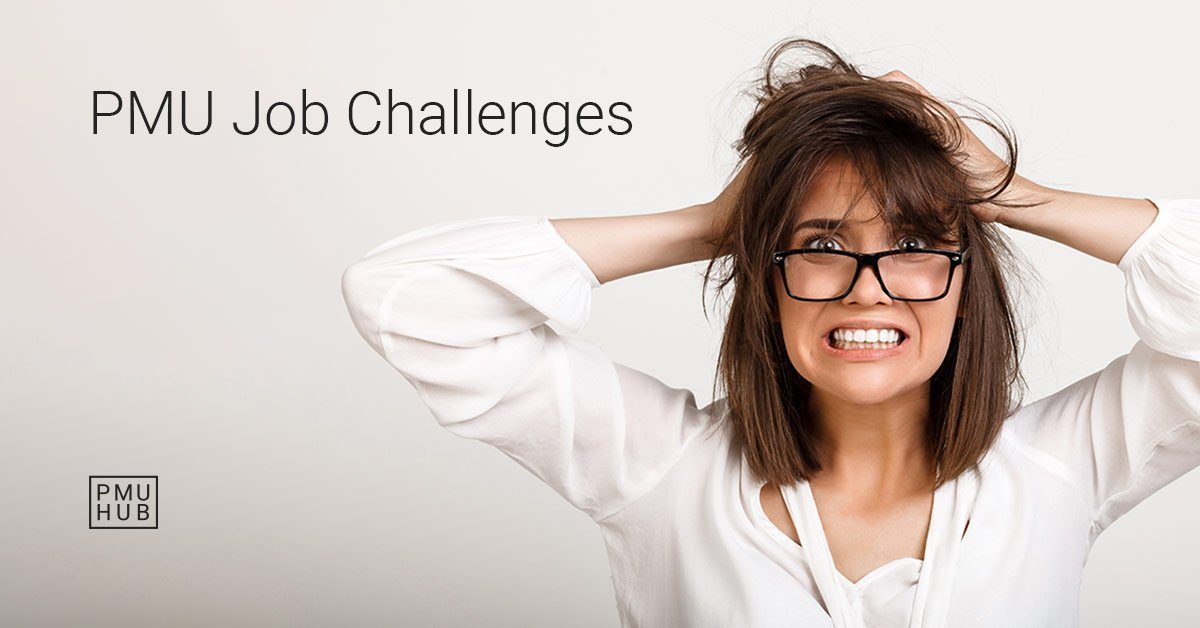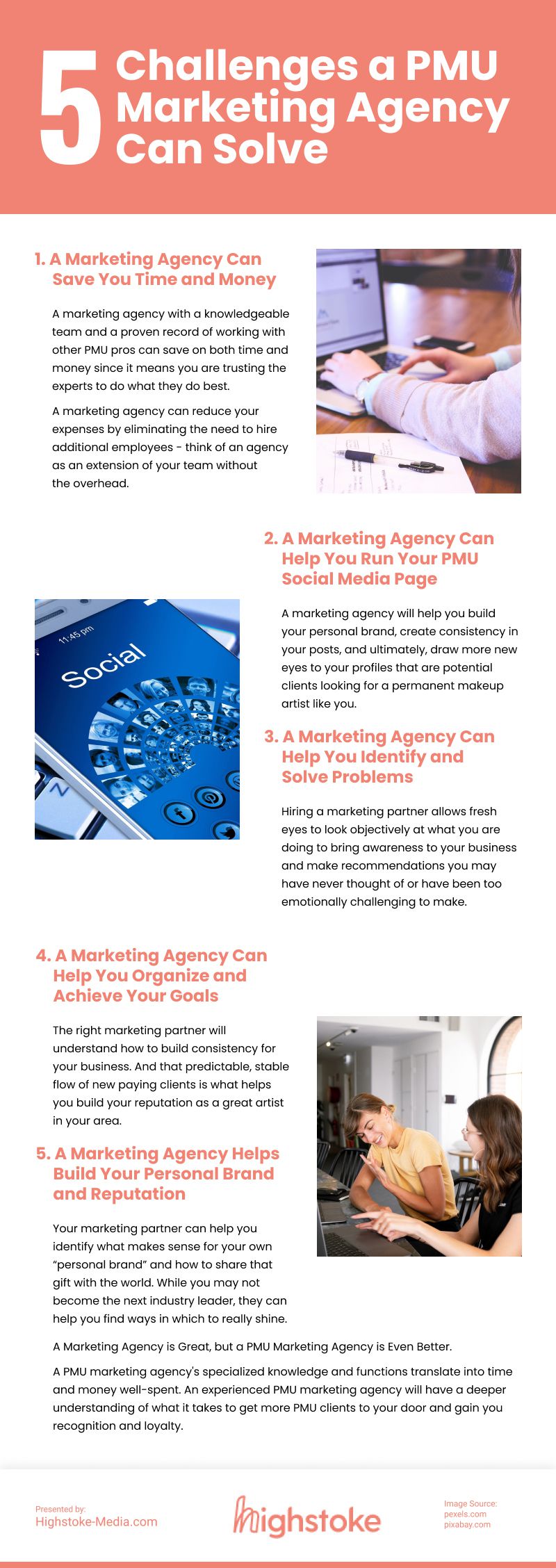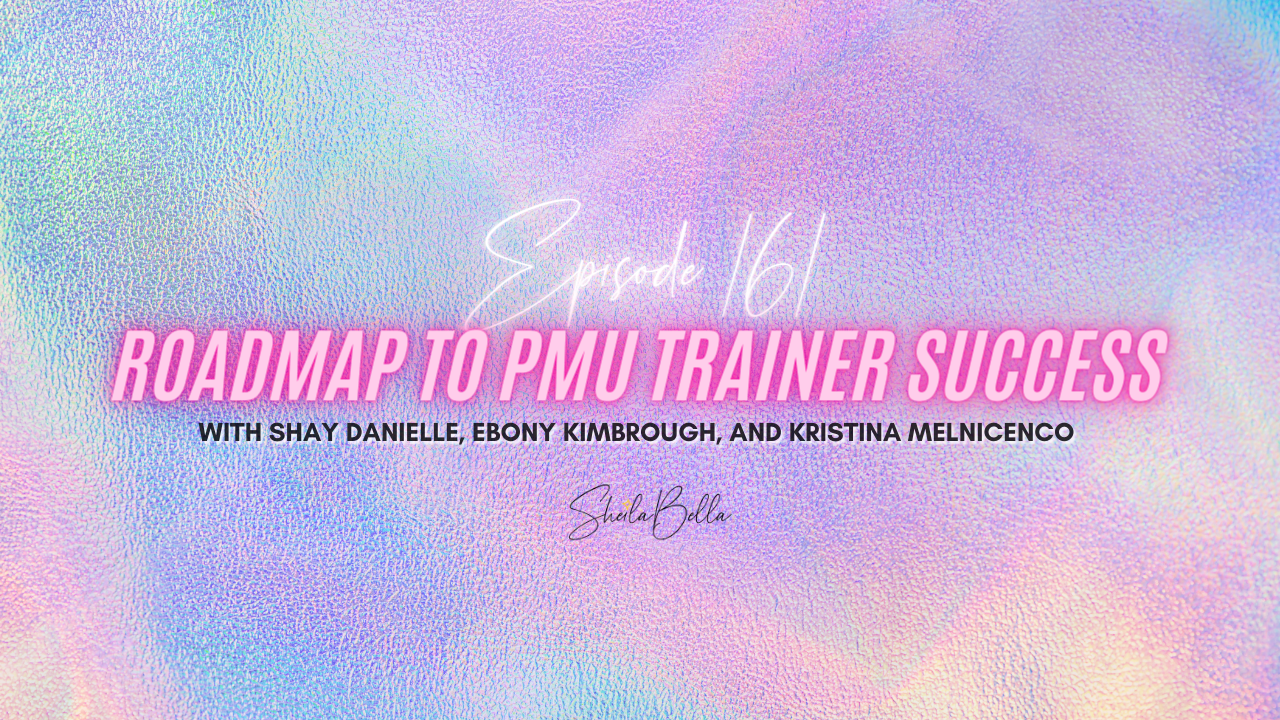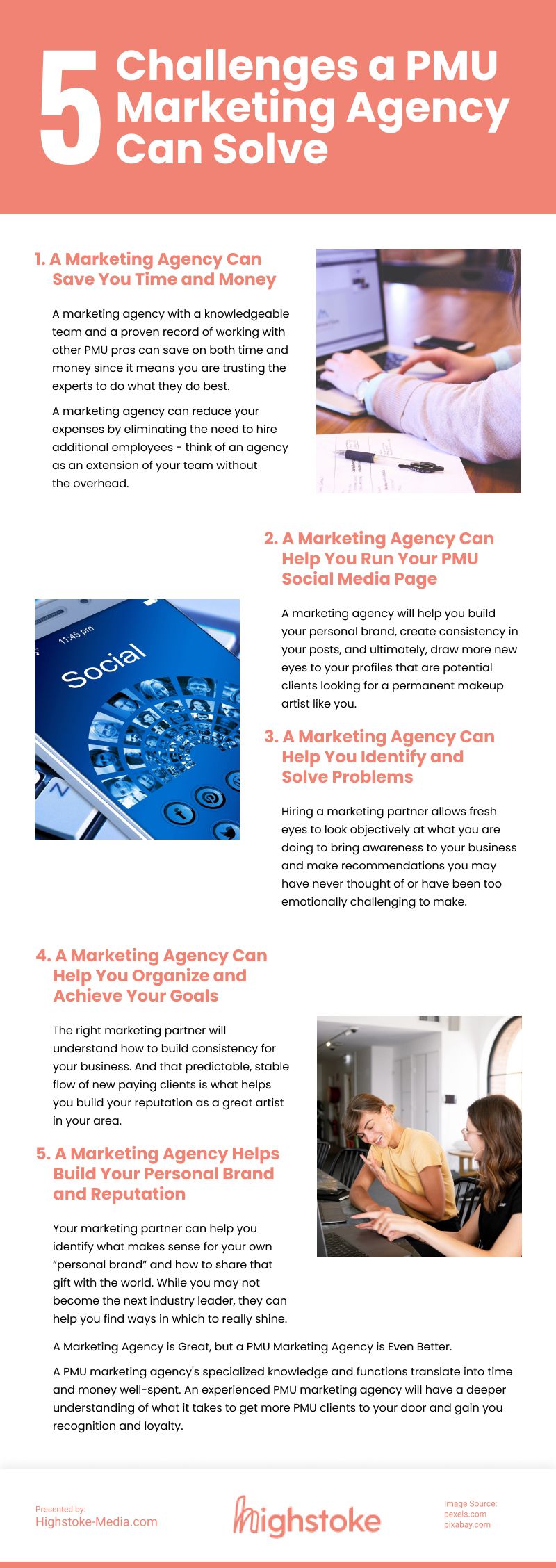Looking to overcome challenges in the PMU profession? Look no further than Million Dollar Brows, owned and operated by the experienced Ms. Elizabeth Smith. With over 13 years in the beauty industry and extensive training in permanent cosmetics, Elizabeth is a licensed and certified artist who offers a range of services, from microblading and microshading to eyeliner and lips. With her expertise and commitment to providing the best treatment and experience for her clients, Elizabeth is here to help you overcome any obstacles you may face in the world of PMU.

This image is property of www.pmuhub.com.
1. Lack of Recognition
1.1. The stigma surrounding PMU
One of the main challenges that professionals in the Permanent Makeup (PMU) industry face is the lack of recognition and understanding from the general public. There is still a stigma attached to PMU, with many people associating it with tattooing or considering it a purely cosmetic procedure.
It is important to educate the public about the differences between PMU and traditional tattooing. PMU is a specialized technique that uses pigments to enhance natural features, such as eyebrows, eyeliner, and lips. Unlike traditional tattooing, PMU is designed to fade over time and requires frequent touch-ups to maintain the desired effect.
By educating the public about the nature and benefits of PMU, professionals can help dispel myths and misconceptions surrounding the industry, and increase acceptance and understanding among potential clients.
1.2. Educating the public about the benefits of PMU
Another aspect of overcoming the lack of recognition for PMU is to educate the public about its many benefits. PMU offers a convenient and long-lasting solution for those who struggle with sparse eyebrows, uneven lip color, or the hassle of applying eyeliner daily. It can help enhance natural features, boost confidence, and save time on daily makeup routines.
Professionals in the PMU industry can contribute to the education process by providing informative resources and engaging in open discussions with their clients. By explaining the procedure, discussing the expected results, and addressing any concerns, professionals can help potential clients make informed decisions about PMU and feel more confident in trying it.
2. Regulatory Issues
2.1. Varying regulations across jurisdictions
One of the challenges faced by professionals in the PMU industry is the varying regulations across different jurisdictions. Each country, state, or even city may have different rules and requirements regarding the practice of PMU. This can make it difficult for professionals to navigate the regulatory landscape and ensure compliance with the law.
To overcome this challenge, professionals need to stay updated on the regulations specific to their location and ensure they meet all the necessary requirements. This may include obtaining the required licenses and certifications, maintaining proper documentation, and adhering to health and safety protocols.
2.2. Compliance with licensure requirements
In addition to the varying regulations, professionals in the PMU industry also need to comply with specific licensure requirements. These requirements may include completing a certain number of training hours, passing exams, and maintaining continuing education credits.
To ensure compliance, professionals should seek out reputable training programs and certifications that meet the standards set by their jurisdiction. It is also important to keep track of any changes or updates to the licensure requirements and make sure to fulfill them in a timely manner. By staying informed and proactive, professionals can overcome regulatory challenges and operate their businesses legally and ethically.
3. Finding Qualified Professionals
3.1. Limited availability of trained PMU artists
One of the challenges faced by clients of PMU services is the limited availability of trained and qualified PMU artists. Due to the specialized nature of PMU, not all beauty professionals are skilled or experienced in performing these procedures. This can make it difficult for clients to find professionals who can meet their specific needs and deliver the desired results.
To overcome this challenge, it is important for aspiring PMU artists to seek out comprehensive training programs and gain the necessary knowledge and skills. By investing in proper education and training, individuals can increase their chances of becoming qualified PMU artists and meet the growing demand for their services.
3.2. Ensuring artists have the necessary skills and certifications
Another aspect of finding qualified PMU professionals is to ensure that they have the necessary skills and certifications. Clients should look for artists who have completed accredited training programs, obtained certifications from recognized organizations, and actively participate in professional development opportunities.
To verify an artist’s qualifications, clients can ask for before and after photos of previous clients, read reviews or testimonials, and inquire about their training and certification process. By ensuring that artists have the necessary skills and certifications, clients can have peace of mind knowing that they are in capable hands.
4. Safety and Sterilization Procedures
4.1. Importance of maintaining a clean and sterile environment
Safety and sterilization procedures are of utmost importance in the PMU profession. Due to the invasive nature of the procedures, it is crucial for professionals to maintain a clean and sterile environment to prevent the risk of infections or other complications.
Professionals should follow strict hygiene protocols, such as using disposable needles, gloves, and other single-use items. All equipment and surfaces should be properly cleaned and disinfected before and after each procedure. Regular sterilization of tools and equipment is essential to ensure the safety and well-being of clients.
4.2. Adhering to strict sterilization procedures
To ensure the highest level of safety, PMU professionals should adhere to strict sterilization procedures. This includes using autoclaves or other approved methods to sterilize reusable tools, storing sterile supplies in a clean and controlled environment, and following proper hand hygiene protocols.
Regular monitoring and record-keeping of sterilization procedures are also crucial. Professionals should maintain detailed logs of sterilization cycles, expiration dates of sterilization products, and regular equipment maintenance to demonstrate their commitment to safety and sterilization practices.
By prioritizing safety and adhering to strict sterilization procedures, PMU professionals can build trust and confidence with their clients and mitigate the risk of any potential complications.

This image is property of www.postinfographics.com.
5. Client Expectations and Satisfaction
5.1. Meeting clients’ desired outcomes
A key challenge in the PMU profession is meeting clients’ desired outcomes. Each client has unique preferences, expectations, and natural features, which require personalized approaches to achieve the desired results. It can be challenging for PMU professionals to interpret and effectively translate clients’ visions into the final outcome.
To overcome this challenge, effective communication is essential. Professionals should actively listen to clients, ask detailed questions, and provide clear explanations of the potential outcomes and limitations of the procedure. They should also showcase their previous work and offer realistic suggestions based on clients’ natural features and desired outcomes.
5.2. Managing client expectations
Managing client expectations is another important aspect of ensuring client satisfaction in the PMU profession. It is crucial for professionals to set realistic expectations and educate clients about the process, healing time, and potential limitations of the procedure.
By providing thorough pre-procedure consultations, professionals can help clients understand what to expect during and after the procedure. It is also important to provide clear aftercare instructions and follow-up appointments to ensure the best possible outcome and address any concerns or issues that may arise.
By managing client expectations and providing exceptional customer service, PMU professionals can enhance client satisfaction and establish long-term relationships.
6. Color Matching and Pigment Selection
6.1. Matching pigment colors to clients’ natural features
Color matching is a critical aspect of PMU procedures, as it directly impacts the final outcome and client satisfaction. Matching the pigment color to clients’ natural features, such as hair color, skin tone, and eye color, requires a trained eye and a deep understanding of color theory.
PMU professionals should assess clients’ natural features, take into consideration their personal preferences, and recommend suitable pigment colors that will enhance their appearance. This requires a combination of technical skill, artistic creativity, and an ability to adapt to individual clients’ needs.
6.2. Selecting suitable pigments for different skin tones
In addition to color matching, selecting suitable pigments for different skin tones is another challenge in the PMU profession. Skin tones can vary greatly, and using the wrong pigment color can result in unnatural or undesirable outcomes.
Professionals should have a wide range of pigment options to choose from, allowing them to customize the color to each client’s unique skin tone. They should also stay up-to-date with the latest pigments and techniques in the industry to ensure they can offer the best possible options to their clients.
By mastering the art of color matching and selecting suitable pigments for different skin tones, PMU professionals can achieve natural-looking results that enhance the clients’ appearance.

This image is property of kajabi-storefronts-production.kajabi-cdn.com.
7. Pain Management
7.1. Minimizing discomfort during PMU procedures
Pain management is an important consideration in the PMU profession, as some clients may have a low pain tolerance or be anxious about the procedure. Minimizing discomfort during PMU procedures is essential for ensuring a positive experience and client satisfaction.
To minimize discomfort, professionals can utilize various techniques, such as topical anesthetics or numbing creams, which can be applied before the procedure to numb the treated area. Ensuring a calm and supportive environment, where clients feel comfortable and at ease, can also help alleviate anxiety and reduce pain perception.
7.2. Utilizing effective numbing techniques
In addition to topical anesthetics, professionals can also utilize effective numbing techniques during PMU procedures. These may include the use of cryogenic cooling devices or specialized numbing solutions that can be applied directly to the treated area.
By staying up-to-date with the latest advancements in pain management techniques and offering a range of options to clients, PMU professionals can help minimize discomfort and ensure a positive experience for their clients.
8. Adapting to New Techniques and Trends
8.1. Staying up-to-date with the latest PMU techniques
The PMU industry is constantly evolving, with new techniques and trends emerging regularly. One of the challenges PMU professionals face is staying up-to-date with these advancements and incorporating them into their practice.
To overcome this challenge, professionals should actively seek out continuing education opportunities, attend workshops, conferences, or seminars, and invest in advanced training courses. By staying informed about the latest techniques, professionals can expand their skill set, offer a wider range of services, and provide their clients with the most up-to-date and innovative treatments.
8.2. Embracing new trends in the industry
In addition to staying up-to-date with techniques, professionals should also embrace new trends in the PMU industry. From new pigment colors and application methods to innovative tools and equipment, embracing new trends allows professionals to offer unique and cutting-edge services to their clients.
By actively engaging in the industry and being open to change, professionals can attract a wider clientele and differentiate themselves from competitors. Embracing new trends also showcases a commitment to growth and innovation, which can be appealing to clients looking for the latest advancements in the field.

This image is property of kajabi-storefronts-production.kajabi-cdn.com.
9. Building and Maintaining a Client Base
9.1. Marketing strategies for attracting new clients
Building and maintaining a strong client base is essential for success in the PMU profession. To attract new clients, professionals should utilize effective marketing strategies that showcase their expertise, professionalism, and the quality of their work.
Social media platforms, such as Instagram or Facebook, can be powerful tools for showcasing before and after photos, client testimonials, and educational content. Creating a professional website that highlights services, pricing, and contact information is also crucial for attracting potential clients.
Collaborating with other beauty professionals, offering promotional discounts or referral programs, and participating in local events or trade shows are additional marketing strategies that can help attract new clients.
9.2. Building long-term relationships with clients
In addition to attracting new clients, professionals should also focus on building and maintaining long-term relationships with their existing clients. Providing exceptional customer service and personalized experiences can help foster loyalty and encourage repeat business.
Professionals should maintain open lines of communication with clients, follow-up after procedures, and provide ongoing support and guidance throughout the healing process. Offering incentives, such as loyalty programs or special discounts for repeat clients, can also help strengthen the client-professional relationship.
By prioritizing client satisfaction and building long-term relationships, PMU professionals can establish a loyal client base that continues to support and promote their services.
10. Continual Professional Development
10.1. Importance of ongoing training and education
Continual professional development is crucial in the PMU profession due to the rapid advancements and constant evolution of techniques and products. It is important for professionals to recognize the value of ongoing training and education to stay at the forefront of the industry.
By attending advanced training courses, participating in workshops, or pursuing certifications in specialized areas, professionals can enhance their skills, expand their knowledge, and offer the highest quality services to their clients.
10.2. Attending workshops and conferences to enhance skills
Attending workshops and conferences is another effective way for PMU professionals to enhance their skills and stay updated with the latest industry trends. These events provide opportunities to learn from industry experts, exchange knowledge and ideas with peers, and gain exposure to new techniques and technologies.
Professionals should prioritize attending relevant workshops and conferences, both locally and internationally, to expand their network, gain inspiration, and continuously improve their craft.
By actively pursuing continual professional development, PMU professionals can elevate their expertise and establish themselves as leaders in the field, ultimately benefiting their clients and their own career growth.
In conclusion, the PMU profession is not without its challenges, but with the right mindset, dedication, and continuous learning, professionals can overcome these obstacles and thrive in the industry. By educating the public, complying with regulations, seeking the necessary qualifications, prioritizing safety, understanding clients’ expectations, and embracing new techniques and trends, PMU professionals can provide exceptional services and build lasting relationships with their clients. Building a successful PMU career requires passion, professionalism, and a commitment to ongoing personal and professional development.



